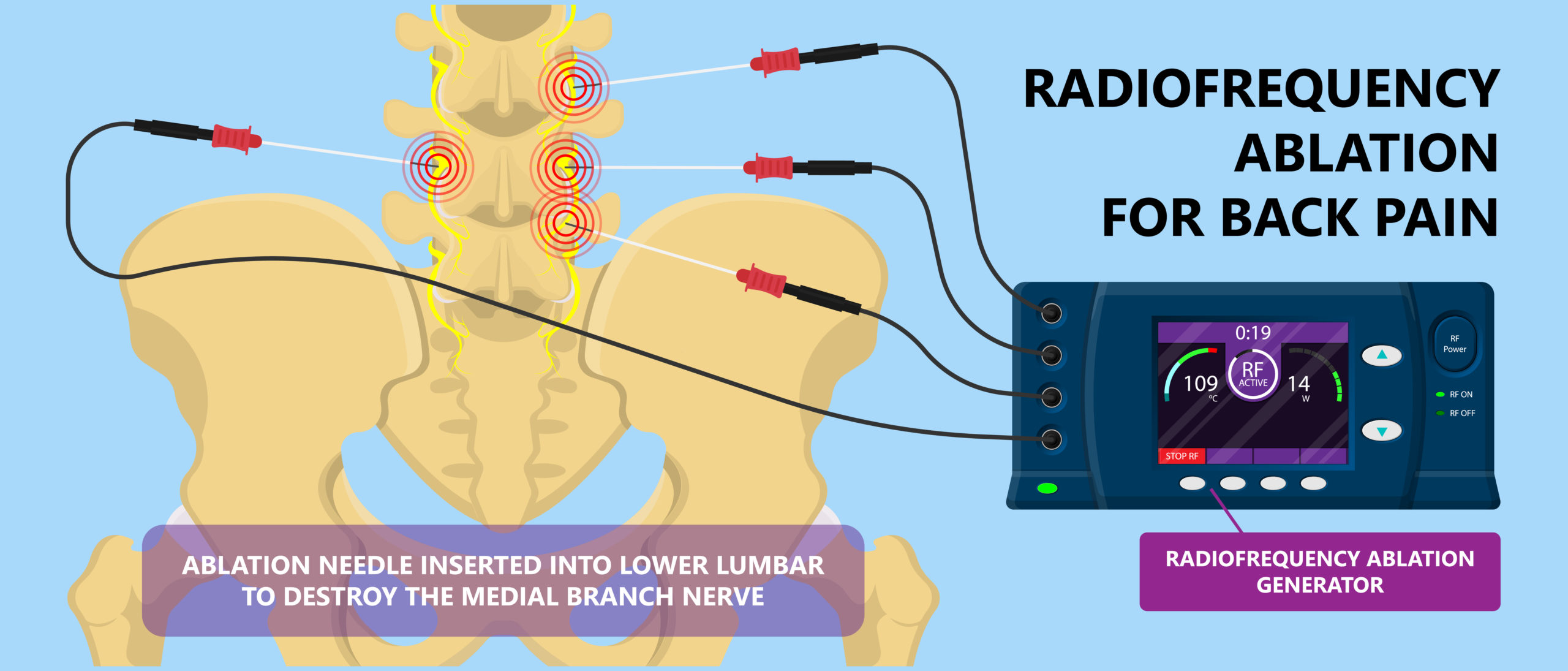
When should you have Radiofrequency Ablation (RFA)?
When should you have Radiofrequency Ablation (RFA)? https://bestpracticehealth.tv/wp-content/uploads/2022/04/radiofrequency-ablation-rfa-st-1024x683.jpg 1024 683 Best Practice Health TV https://bestpracticehealth.tv/wp-content/uploads/2022/04/radiofrequency-ablation-rfa-st-1024x683.jpgWhen you have back pain more than 12 weeks old due to arthritis that has failed first line treatments.
I recently saw Steven King in The Clinic for severe low back pain. Steve’s pain was off to the side, shot to the buttocks, felt like it was in his hip, and burned on his outer thigh. This pattern is typical of low back pain due to an arthritic facet joint.
The medial branches go exclusively to the facet joints. If you were to numb up a medial branch you would not feel the facet joint to which it was connected, but you could feel a spinal nerve root, disc, or another ligament the same.
MRI (magnetic resonance imaging) of Steve’s back showed swollen facet joints. On examination Steve’s back was tender over his lower joints, and there were no signs of neve root problems like numbness or weakness in his legs.
I recommended that Steve undergo RFA (radiofrequency ablation. RFA is an excellent treatment for low back pain caused by arthritis. However, the procedure is not for everyone. Complete the following checklist to find out if RFA may be right for you:
- back pain due to arthritis
- for more than 12 weeks
- Swollen joints on MRI that correspond with the painful part of your back on exam
- NSAIDs like Aleve and Ibuprofen didn’t work
- PT or home exercise wasn’t enough
If you checked all the above the keep reading because you are probably a good candidate for a radiofrequency ablation procedure for the treatment of your low back pain. Read to the end to learn more about this highly effective procedure.
Radiofrequency ablation is often called burning of the nerves because the pain fibers to a facet joint are burned during the procedure.
RFA is a highly effective treatment of chronic low back pain due to facet arthritis
Before burning your nerves, your pain doctor will perform an injection to confirm the joints are the source of your pain. The effect of the block is temporary. But for those who get > 80% pain relief during the time the block is active, you can go on to the RFA procedure.
Among patients who have a positive medial branch block, you can expect to feel better after a radiofrequency ablation procedure. Studies have shown variable results, but 60% of patients should expect to get 80% pain relief from burning the nerves.
If radiofrequency ablation does not work your pain doctor may recommend repeating the medial branch block.
Reasons why a radiofrequency ablation procedure may not work:
The medial branch block was a false positive
The medial branch was missed in the RFA procedure.
If you had a radiofrequency ablation and it was not effective, then the first thing to do is have a repeat medial branch block. If the test is negative, then the first one was a false positive and you need to consider other treatments. If the repeat block is effective, then the pain management doctor may have missed the medical branch in the ablation procedure. Everyone is different: this happens a lot when your branch is not in the usual position. A repeat radiofrequency ablation procedure is recommended.
How long does radiofrequency ablation for the treatment of low back pain typically last?
To learn more watch here:













